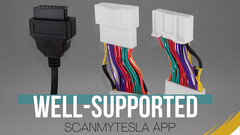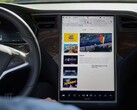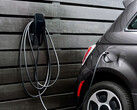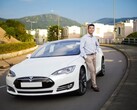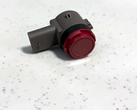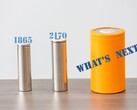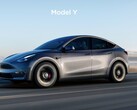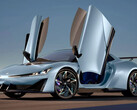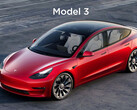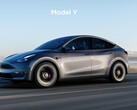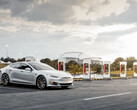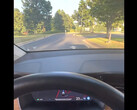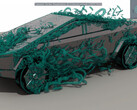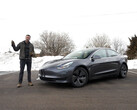Tucked in a Korean politician's memo that Tesla is resisting the requirement to adopt the On-Board Diagnostics (OBD) standard for local inspections, is the revelation that the US carmaker is working on its own EV-specific diagnostics and reporting system that will launch next October. Tesla will reportedly use South Korea as a pilot for its OBD alternative and will expand its use globally from there, report industry insiders.
It seems that Tesla has chosen Korea as a testing ground for its upcoming electric vehicle diagnostics standard because it has been at continuous odds with authorities there about the refusal to use OBD on its newer vehicles (the Model S/X come with an OBDII connector). While in other regions like Europe, China, or Japan, Tesla has been granted exemption from the requirements to use the OBD standard, in South Korea local inspectors have kept pushing for an adoption. The Korea Transportation Safety Authority (KTSA) has even been conducting random spot checks on Tesla vehicles, examining the wiring and dashboard error reports with the hope that Tesla will budge.
Instead, KTSA data obtained by a Senator from the Democratic Party of Korea says that Tesla plans to circumvent the established vehicle inspection procedures there again by developing its own diagnostics system. Needless to say, the politician is less than pleased with this development as there is a growing suspicion that Tesla will have full control over its OBD alternative and vehicle inspectors still won't have the full picture. Tesla is the only one of the 26 major car brands in Korea that considers itself exempt from the OBD testing requirement, citing security concerns with its self-driving software.
Using various legal tricks, it has been resisting the KTSA mandate to collect and store OBD data to facilitate inspections and is instead readying to offer a reporting system of its own that insiders fear could paper over major engineering flaws or glitches:
Credibility of inspection results via the Tesla-designated data server will be low, as the carmaker can manipulate the data in advance. While many Korean consumers still clearly remember the '2015 dieselgate’ by Volkswagen in which the German carmaker manipulated exhaust emissions to pass the test, Tesla should find a fair, credible way to guarantee vehicle's safety instead of relying on its own technology.
In the US, air quality regulators exempted newer Teslas from the requirement to install OBD ports to test engine emissions on the ground that these are electric vehicles. Currently, one can still purchase a Tesla-specific OBD adapter and tap into a treasure trove of electric vehicle reporting information from the Model 3 or Model Y which have a console connector built into their back seat.
Coupled with a diagnostics app like Scan My Tesla, the toolkit allows owners or technicians to look up things like electric motor torque or battery temperatures. Tesla's idea to develop its own EV diagnostics and reporting system, however, might raise some eyebrows among regulators and industry peers alike.
Get the OHP OBD2 Scan Tool Adapter for Tesla Model 3 & Y 2019 - 2021 on Amazon




